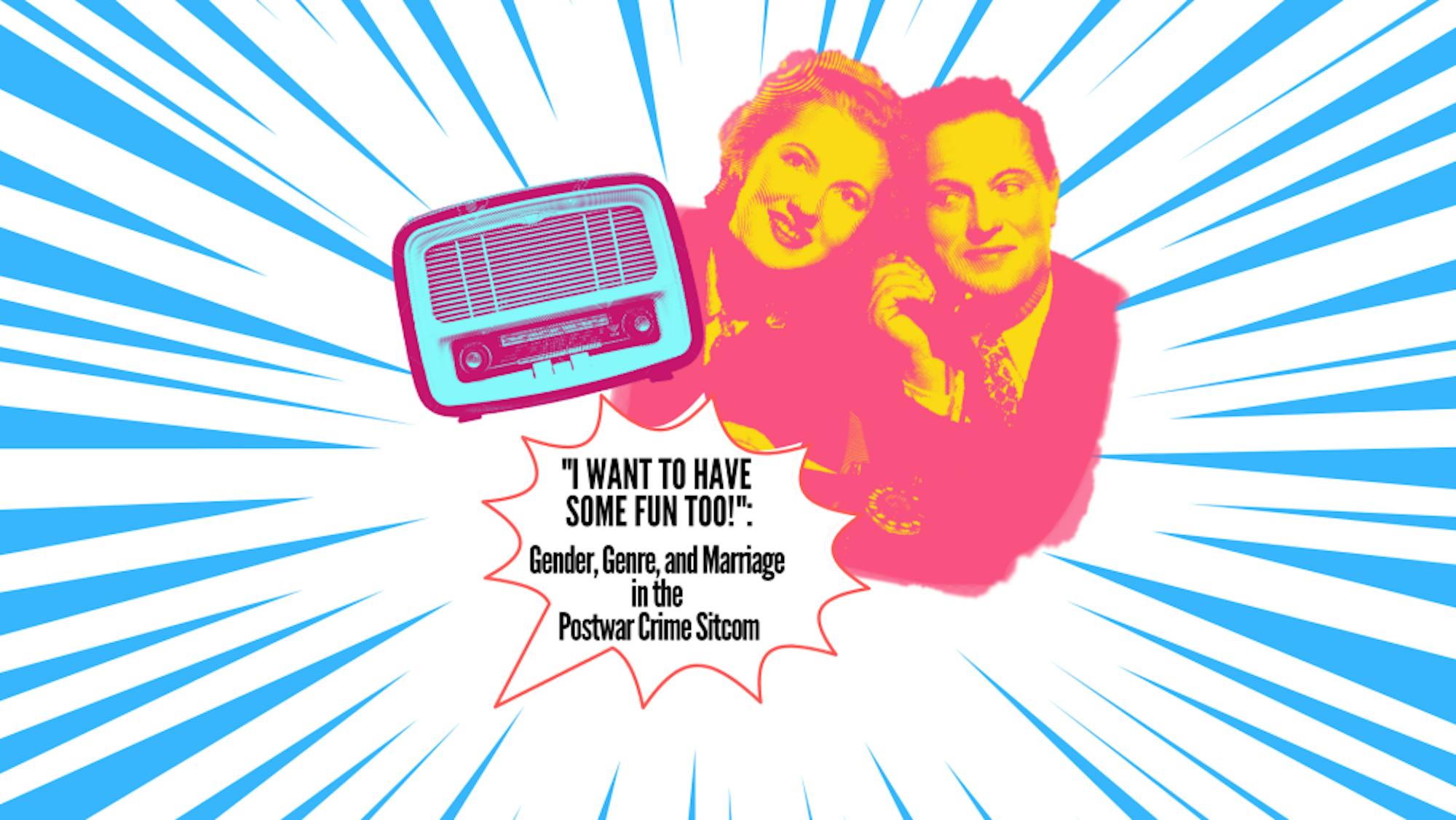“I treat media as a large social subconscious,” Catherine Martin said of her work in media studies. “We deal with different, changing ideas through media, especially TV.”
Martin, an adjunct lecturer in the film and media studies department, presented a chapter of her dissertation on Monday, Oct. 26 as part of the Boston Cinema/Media Seminar as the speaker from Tufts. The presentation, titled “‘I want to have some fun too!’: Gender, Genre, and Marriage in the Postwar Crime Sitcom,” looked at the influences of three radio “crime sitcoms,” as Martin categorizes them, that became incredibly popular from 1945 to 1954, and then vanished soon afterward.
“They’re sitcoms, like ‘I Love Lucy,’ but there are no children, and the husband is often a detective (though in one example he’s not a detective), but the wife wants to help him investigate, and to varying degrees she gets to help him investigate,” Martin explained in an interview prior to her talk. “I look at the way that different working women were represented in crime dramas and were popular on radio in the 1940s and then completely written off of television in the 1950s.”
By examining the women from these crime sitcoms — Nora Charles from “The Thin Man” (1957–59), Pam North from “Mr. and Mrs. North” (1952–54), and Jean Abbott from “Adventures of the Abbotts’” (1946–47)— and their relationship to marriage and crime-solving, Martin argues that these shows eventually became too subversive for patriarchal standards in the postwar era.
“I argue that that the crime sitcom was dangerous in the postwar period — to broadcasters, at least, people invested in maintaining a patriarchal status quo — because it suggested that stereotypically feminine values like empathy or concern about peoples’ economic situations might influence the criminal justice system and bring it away from the law-and-order, ‘Dragnet’-style policing that eventually gained dominance in the postwar world,” Martin explained in her talk.
Martin highlighted how these crime sitcoms had elements of screwball comedies, marriage sitcoms and crime dramas. “I argue it’s an under-recognized sub-genre; it merges elements of the postwar crime genre with the emerging postwar marital sitcom, so part of my work explores the way that radio and television’s propensity for generic hybrids like the crime sitcom made room for positive, even revolutionary representations of crime-curious women in the decade after World War II,” Martin said.
This particular chapter comes from Martin’s dissertation on representations of women in postwar crime dramas. In the interview, Martin explained, “My larger dissertation is about representations of women in radio and television crime dramas after WWII leading up to second-wave feminism. My more flipped way of defining my time is after women were being forced back into the home after WWII (and by women I mostly mean white women, because Black women always worked, and middle-class women, because that’s who the broadcasters cared about) and before the TV networks recognized that working women existed — or that working women were worth measuring.”
After growing up listening to crime novels on tape during long car rides, Martin first became interested in studying radio as an undergraduate listening to podcast radio shows on the campus radio station, where she found the crime shows particularly interesting. After part of her master’s thesis — which was on adaptations of “The Maltese Falcon” (1941) — focused on the role female secretaries played in these crime shows, Martin decided to study representations of women in crime dramas. “[It was] looking at the way these shows mediated ideas about women’s work and gave women room to work and to imagine themselves working,” Martin said. She added, “Radio is one of those areas that I feel like has really gotten overlooked — even in academia, radio studies is seen as such a niche, but it’s really fascinating how so many tropes that we still see on TV today were established in radio.”
Throughout her talk, Martin mentioned the implications of forcing women out of policing represented in the media, drawing a connection to the issues with the modern-day policing system. When traditionally feminine qualities are rejected in lieu of supposedly clear-cut, emotionless forms of policing, it reinforces crime-solving, as Martin puts it, as “one of the most emphatically masculine bastions of patriarchal power.” In the interview, Martin explained, “One thing that I find really interesting with these wives is that they sort of push a slightly different idea of justice that’s much more empathetic, and then that gets shut down. It’s interesting how female detectives always have to embrace male traits, and maybe if we hadn’t made female detectives embrace male traits on TV, we would have a healthier view towards policing in the modern day.”






